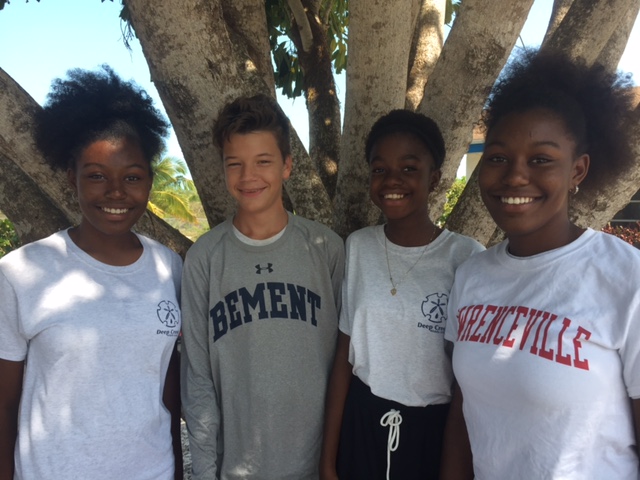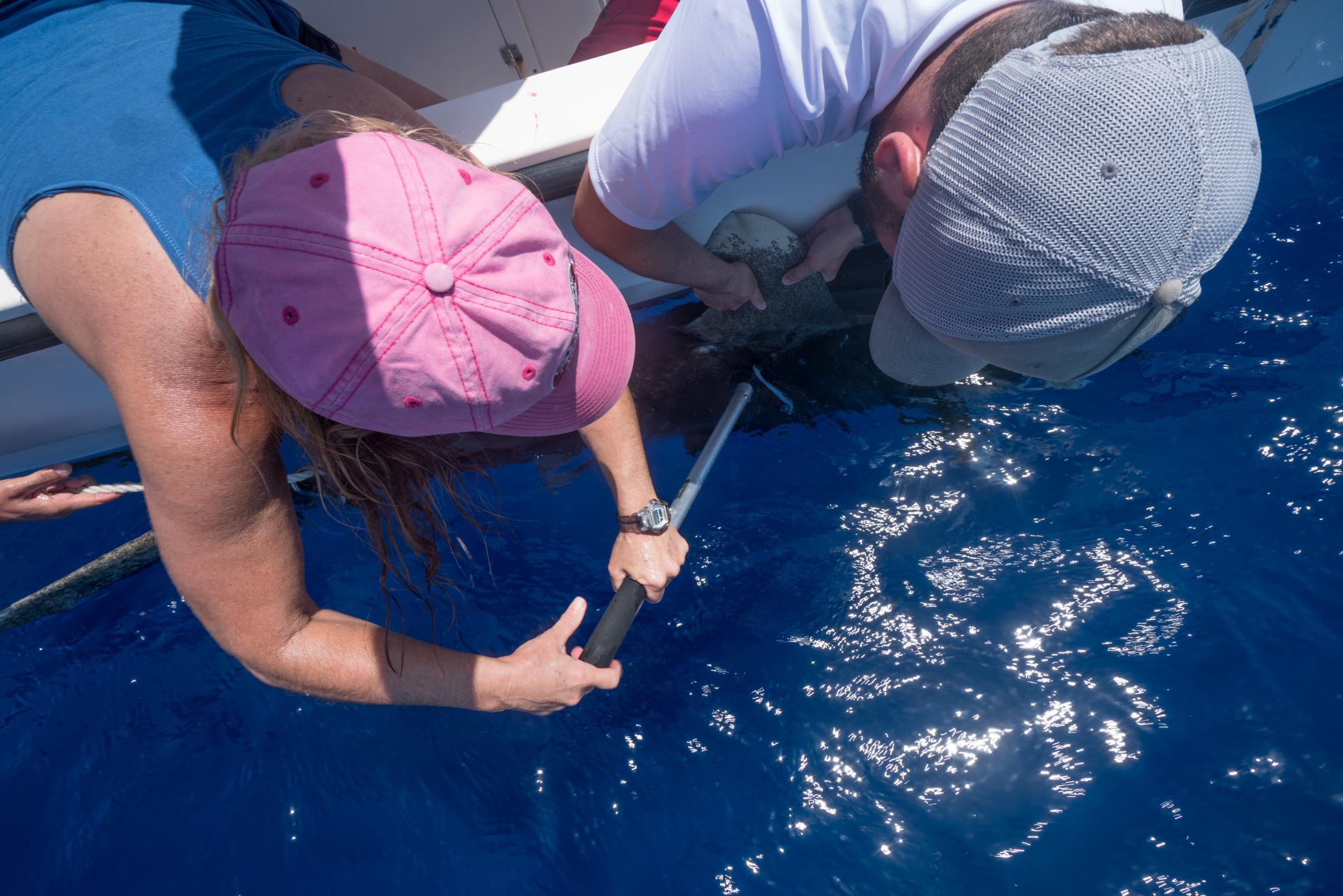Over the course of the last two weeks, members from the Shark Research and Conservation Program traveled to Cat Island, The Bahamas, for the 7th annual oceanic whitetip shark tagging expedition. This project, which started in 2011, has partnered with various institutions over the years in order to better understand the movements, behavior, and physiology of this severely threatened pelagic species. This year, partnering with the Anderson Cabot Center for Ocean Life at the New England Aquarium, University of North Florida, Microwave Telemetry, photographer and videographer Andy Mann, Google Expeditions, and the Moore Charitable Foundation, the team explored the physiological effects of capture in addition to the continued tagging and sampling efforts.
Despite the historical abundance of oceanic whitetip sharks, this species has undergone drastic declines leading to a ‘Critically Endangered’ status in the Northwest Atlantic. Cat Island remains one of the few destinations where this species can be found reliably and in large numbers, despite still low population numbers. Past expeditions to Cat Island have produced details of movement and migratory patterns, reproductive status, site fidelity, and genetic structure for the species, providing a better understanding of the population and contributing to conservation efforts.
Oceanic whitetips swimming in the deep waters off Cat Island.
This year, the team successfully sampled 27 whitetips and deployed 9 high rate pop off archival satellite tags (PSATs) that record temperature, depth and location at a 2 minute resolution for 12 days. This data, complimented by blood chemistry analysis and accelerometer data, will be used by Dr. John Mandelman, PhD. candidate Ryan Knotek and Dr. Jeff Kneebone of the Anderson Cabot Center for Ocean Life as part of a study on capture stress and post-release behavior in the species. With this study, information will be extrapolated to determine the impacts of recreational and commercial fisheries on whitetip populations.
Debbie Abercrombie and Ollie Shipley apply a PSAT to a shark.
Fourteen standard rate PSATs were deployed onto pregnant females that record the same information at 15 minute – 1 hr resolution for up to 9 months, allowing for insight into the reproduction cycles and pupping grounds of the species. Pregnancy was determined by Dr. James Gelsleichter and Masters candidate Chelsea Shields from University of North Florida, who performed ultrasounds on potentially pregnant individuals. Tissue samples were also collected from each shark to be used for niche width and diet comparisons, as well as continued analysis of population connectivity and structure.
Jim Gelsleichter takes an ultrasound on a potentially pregnant female.
John Mandelman and Ryan Knotek process blood samples on the boat.
In addition to collecting data contributing to the conservation of the species, this expedition also explored a new means of education to be implemented in The Bahamas and available globally. In collaboration with Andy Mann and Google Expeditions, CEI developed a virtual reality lesson plan highlighting the importance of healthy shark populations and the need for conservation and research. This lesson plan will be implemented by CEI in classrooms across The Bahamas, and will be available to the public following release to Google Expeditions.
Each year, this expedition explores new aspects of research, conservation, and education; we are delighted with the success of the most progressive year yet, and we thank our collaborators and funders for making this expedition possible. Thank you also to all who helped execute the study: Lucy Howey-Jordan, Dr. Lance Jordan, Debbie Abercrombie, Sean Williams, Dr. Edd Brooks, Annabelle Brooks, Dr. Mark Bond, Dr. John Mandelman, Ryan Knotek, Dr. Jeff Kneebone, Dr. James Gelsleichter, Maggie Winchester, Oliver Shipley, Brendan Talwar, Chelsea Shields, and Andy Mann.


